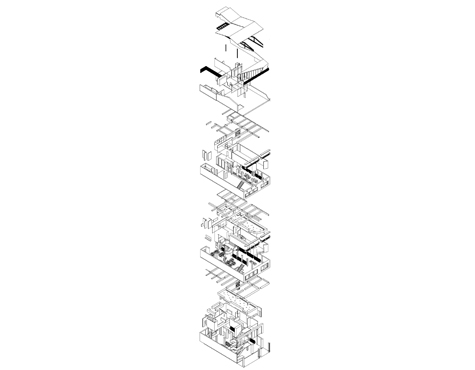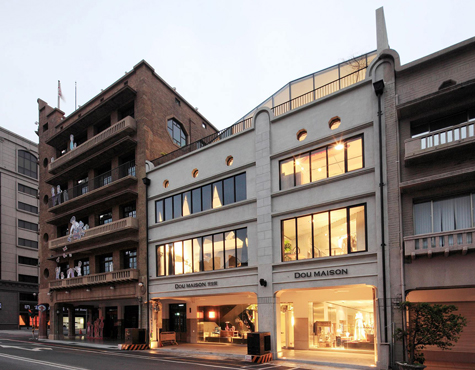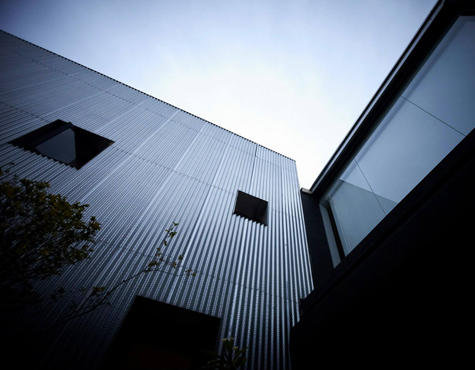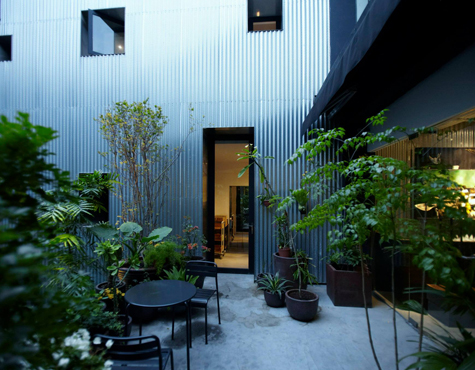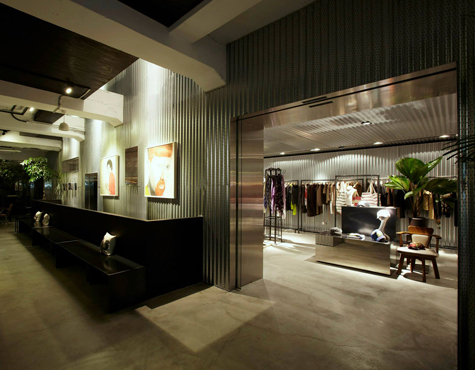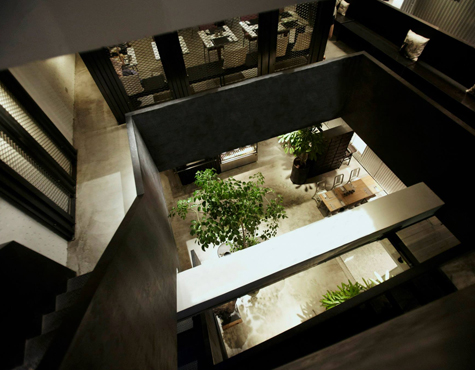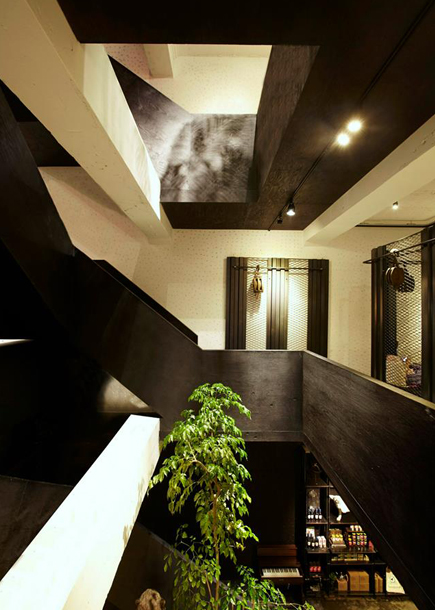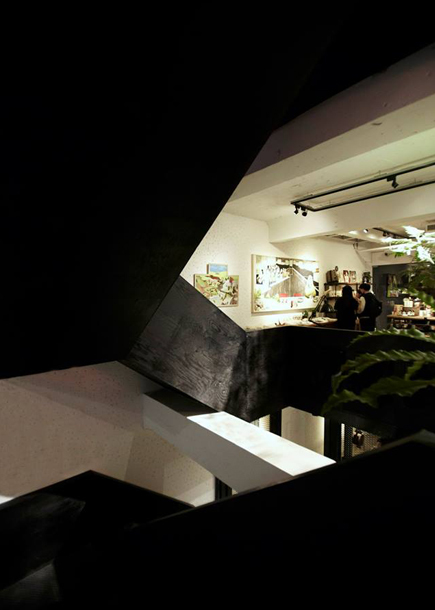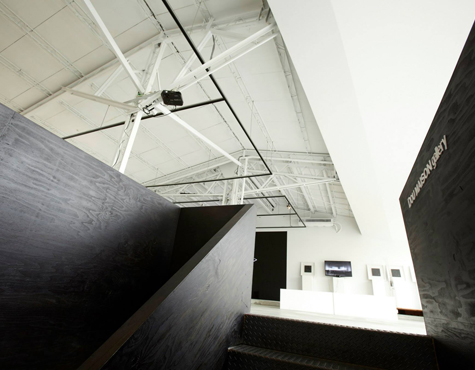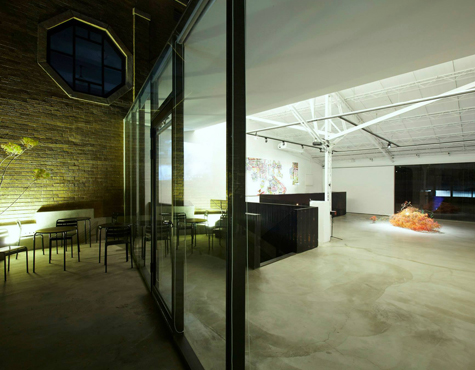Dou Maison
The project is located in Tainan, next to the Hayashi department store, the first department store in Taiwan. All the buildings on the street were built at the time when Taiwan was ruled by Japan. After a long while, Some were broken, and some roughly remained their original looks. The project happened to be flanked by two of these buildings that otherwise were preserved well but the building of the project itself was in severe condition. The design strategy adopted an approach of renovation for this historical building. By reclaiming the building's original elevation, it regained the integrality of the street, and reshaped the characteristics of the new age. The unfolding of this project over the urban context of Tainan revealed a social intention. This is a place where fashion meets culture and a historical dialogue emerges between Hayashi and Dou Maison along the refurbishment of the two. Meanwhile, it is also a statement that expresses the enthusiasm of Dou and Changlee about the bridging between fashion and humanities as well as the confidence in the development of fashion industries.
The elevation window was remained its original proportion as much as possible to preserve the former characteristics and respond to the street elevation on both sides. Though expected to keep its original features, the renovation did not just duplicate the old. What was implemented was the refurbishment of the original tile and restoration of the damaged with cement. Big fixed glass was adopted for the interior window and aligned with the height of the elevation window. Modern architecture language that was applied in the historical building as a comparison made the texture of the original tile even more conspicuous and propagated historical meanings in contemporary ages.
The design concept for the interior was that the whole building was treated as a historical container. In order not to damage the integrality of the historical building, implantation was chosen as the main means for inserting new elements, thus to distinguish the old and new as much as possible. What was implanted performed as the new, and what was preserved served as the old. The implanted body were in various sizes as if collected in a treasure box. Volumes of different scales were scattered over the interior like boutique store, kitchen. Even the staircase was considered as a big "void" volume. It transformed into a solid one when extending to the 4th floor in a series of variation. All the activities took place among these bodies including big scale ones with specific functions, small scale ones acting like mobile furniture or display props, as well as the wandering through these bodies.
Main boutique stores were on the right side of the building, each of which occupied 1/3 of the floor area. Corrugated perforated metal was applied to wrap the whole boutique space including the wall and ceiling on the 1st and 2nd floor. New elevation made of corrugated perforated metal defined the function zoning and also left some openings to communicate with the left side. Clothing display was fit into the neat wall opening, thus display openings in various sizes and heights were integrated into the wall system of the boutique store, embedded indiscretely within its structure. To the left of the building existed a display system that more focused on activities. The island section was consisted of wood in black paints, mirror, and white spray paints to echoed to the idea of scattered objects. The objects that included the clothing display, counter, fitting room, storage etc. shared an abstract composition relationship usually found in modern sculpture. However, the boutique store on the 3rd floor, a space with multiple functions, sharing similar programs performed in the space on the left, held non-regular sales and special exhibitions. Therefore, the boutique store on the 3rd floor was a pure space without being finished with corrugated perforated metal, more like a neutral and flexible space.
The café on the 1st floor acted like a lobby. It was not just a shop. On the contrary, it was more like a entry or a square to the fashion world. It was the beginning for the program and clothing display upstairs. Through it the customers could wander freely around the whole building. Besides clothing display, there were still programs like dining and art exhibition. Especially for the first floor café, it not only served dining program but also provided multiple exhibition functions. Prop design intended to insert small objects into those big volume spaces, for example, adding box seats into a bigger space volume like a kitchen or a clothing display. Box seats were mobile, and could be used as partitions or display props. Thus, all the furniture could also be used as display props that again acted like the extension of the boutique store, as part of the clothing display. Display props that seemed arbitrarily organized on the site linked each other as a relevant whole, and thus enabled each side of the building to interact with the other side. Display props that were dispersed everywhere became dining tables, chairs when located in the restaurant, and transformed into other relevant displays elsewhere.
Function was more concerned on the 2nd floor where numerous seats were arranged. Lower height lounge seats could be flexibly used in different combinations. The original walls from the 1st to the 3rd were chipped then painted. The ceiling window in the rear balcony on the 2nd and 3rd floor was designed in the form of glass without frame that even more purified the space. Meanwhile, the elevation design for the boutique store was again adopted here in the rear as if the interior extended to the exterior. It brought about the joy to experience the encounter of the new and the old as well as to sense the insertion of the boutique store into the historical building. The 3rd and 4th floor were mainly assigned for an open gallery and an exhibition space with multiple functions. Thus the 3rd floor was the entry for the upper two floors, or acted like a lobby for the following exhibition spaces and remained the circulation to the boutique store. The 4th floor was designed with a bigger spatial area that could house more visitors in one time or serve for big scale exhibitions. Outdoor café was set up on the rear balconies on the 2nd and 3rd floors. An outdoor staircase that connected both floors was arranged to bring more flexible, intimate relationships between them.
To sum up, the openings on each floor to the different programs on the side made customers experience the amusement of shopping by switching without obstruction to different activities on different levels. The main theme was built up upon the wandering between the white textured historical building, black painted wooden body and metal textured volume. This combination made it possible for such a historical building that it could harmoniously merge with the modern fashion industry and its events.

